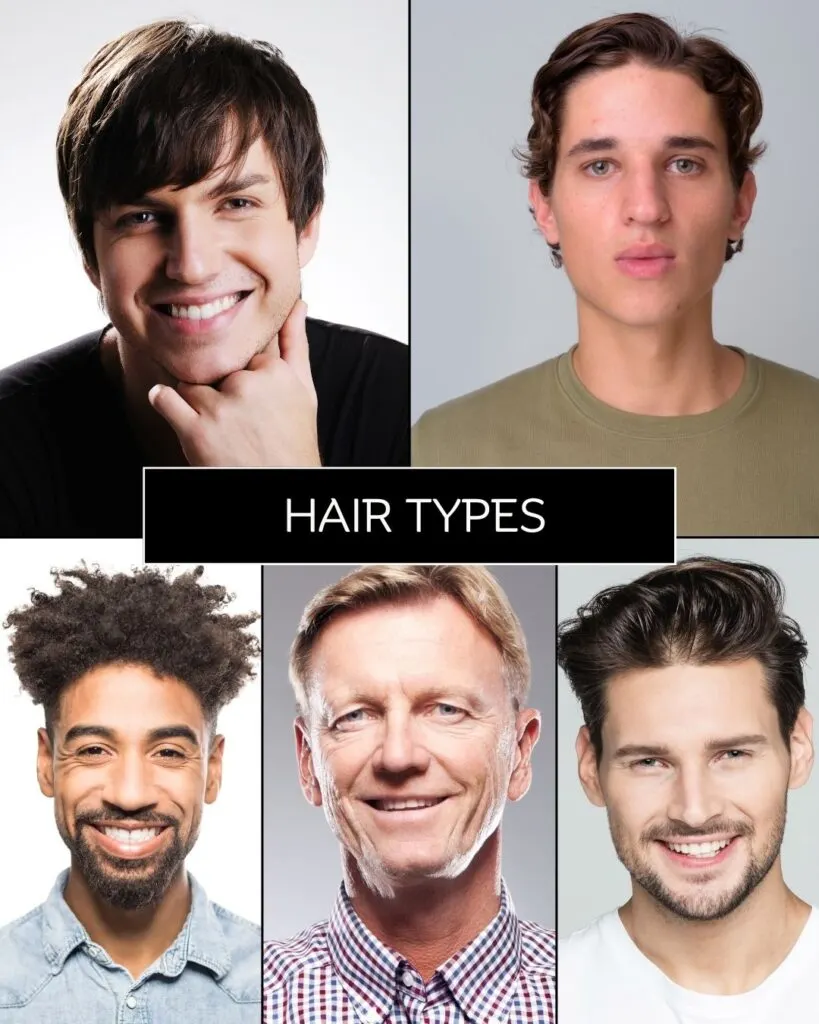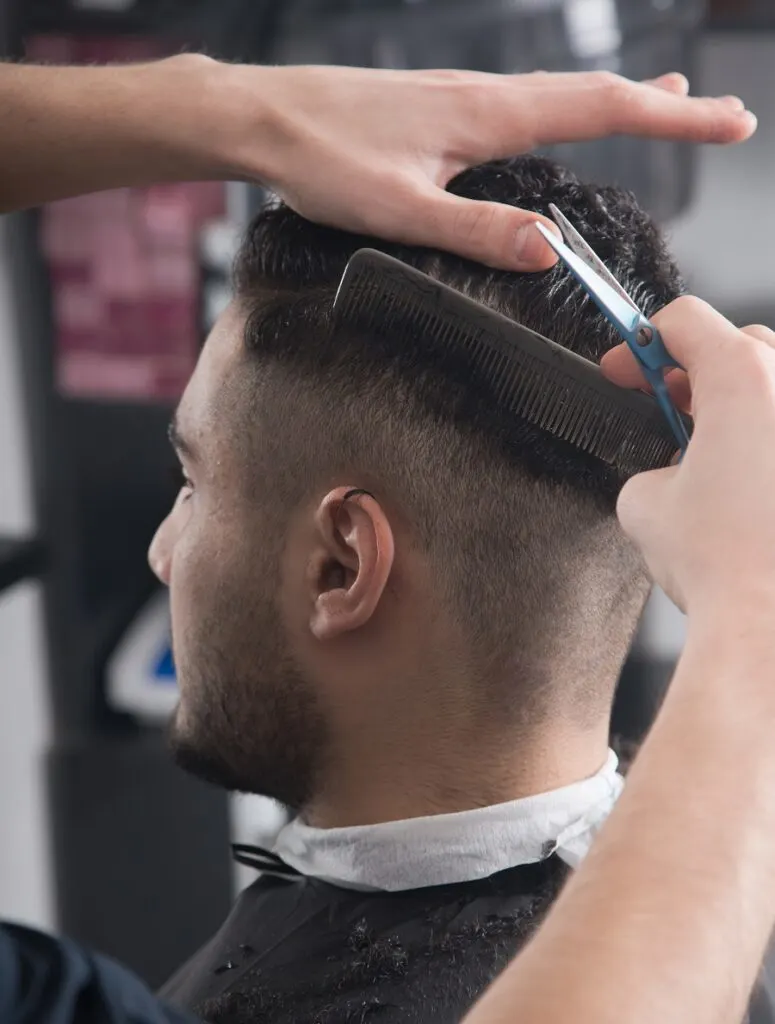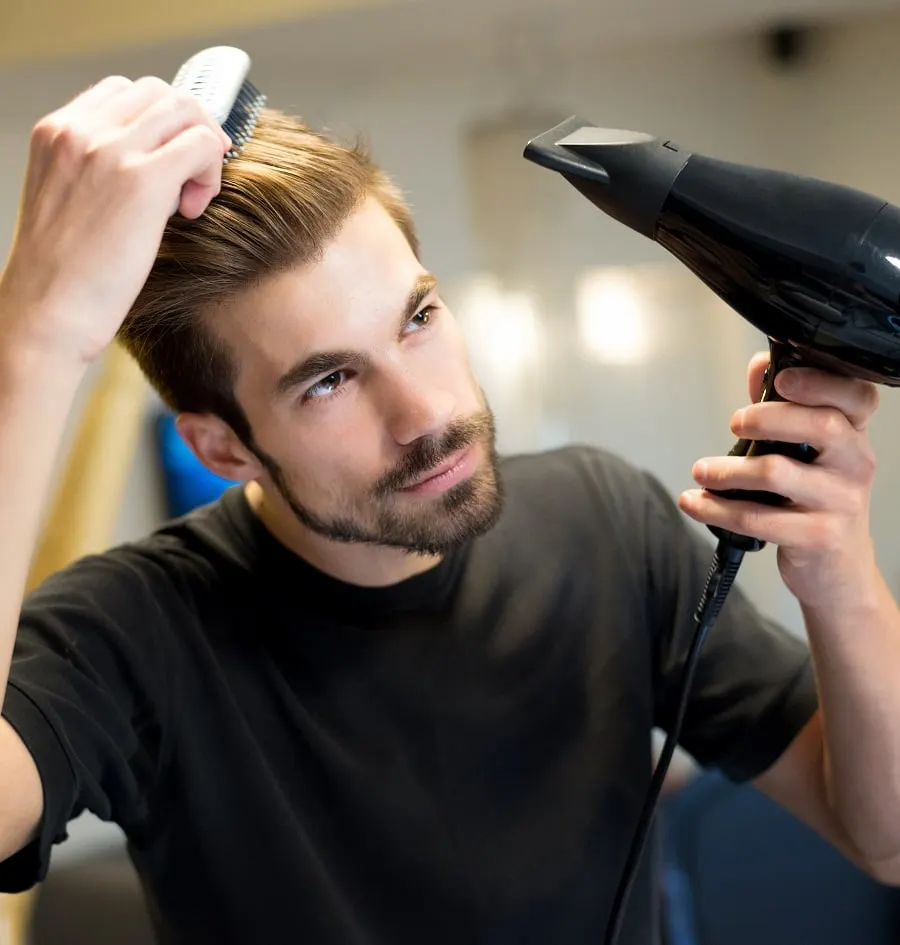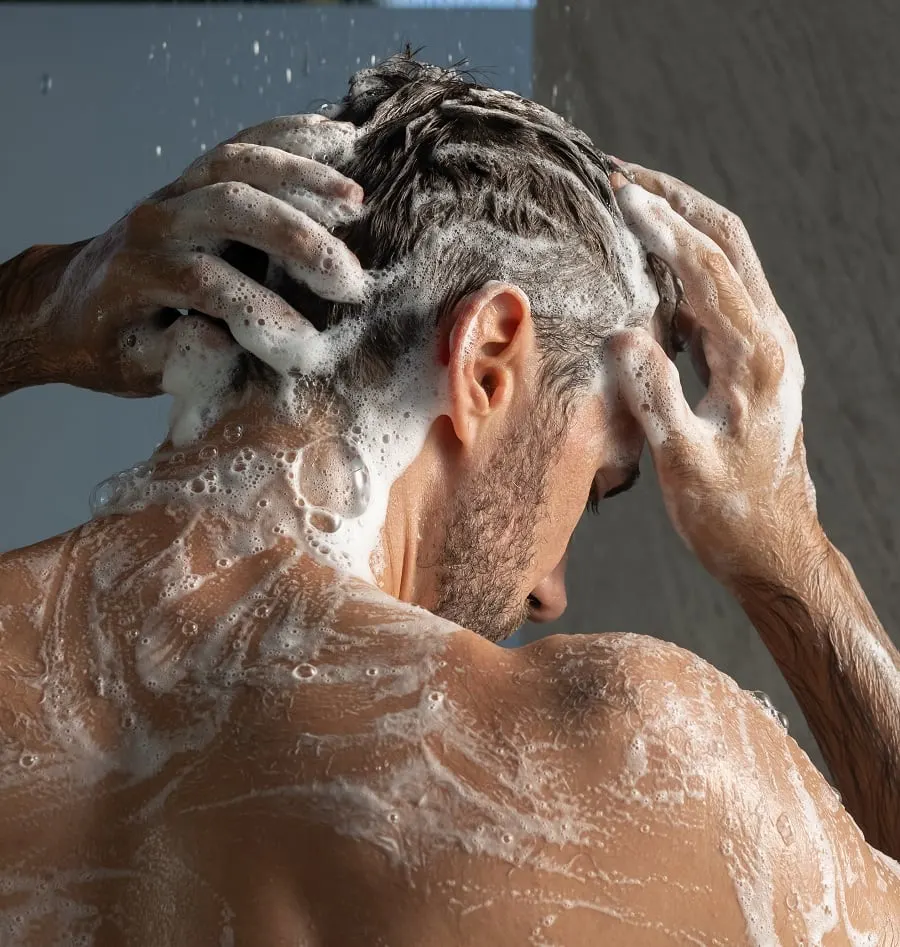Ever looked at someone with a pushed-back hairstyle and thought, “How do they always have perfect hair, even on a grocery run?” Well, here’s a little secret: It’s all about training the hair to go back.
And guess what? You don’t need a hairstylist squad to pull it off. With a few tricks and some patience, you can get that sleek look too.
So, want the lowdown on turning your hair into that cool, pushed-back style? We will show you how to train your hair to stay back naturally in a few months.
Can You Train Your Hair to Go Back?

You can train your hair to go back, but it’s not as simple as it sounds. The term training your hair refers to the process of consistently styling or arranging the hair in a particular manner until it naturally adopts that shape or direction.
For example, if you’ve always parted your hair on the left and then decided to switch to the right, it might take some time and persistence. But, with regular styling, your hair can become accustomed to this new direction.
Women’s hair naturally tends to stay back as they keep it longer and style it backward since childhood. But men face more trouble while going for slicked-back hairstyles as their hair refuses to stay on the back.
Your scalp produces oil more quickly when you wash it with shampoo regularly. Gradually extending the time between washes can train your scalp to produce less oil over time.
On the other hand, you can’t train your hair’s natural texture to change drastically. But you can make your hair more manageable by training it.
Best Hair Types for Training to Sweep Back

Training your hair to lay back is possible. But the question is, does this work the same for everyone, regardless of their hair type?
Straight Hair
Straight hair is characterized by a fine and uniform texture. It tends to naturally lie flat against the scalp, making it the ideal candidate for the slicked-back look. So, it’s easier to tame and requires less effort.
If you train your strands to stay back, you can grow a mullet or rock an undercut pompadour with ease with your straight hair.
Wavy Hair
In terms of texture, wavy hair falls in between straight and curly. It varies from fine to coarse and features a distinctive pattern resembling an S shape.
When training wavy hair to go back, consider the wave’s natural tendencies. Wavy hair requires more product and effort to keep in place, as the waves can introduce some unpredictability to the final look.
Wavy hair often struggles to keep the natural oils that help achieve a healthy shine. Without the proper technique and product, the hair may appear dry and frizzy.
Moisturizing shampoo works wonders with curly hair as it can prevent dryness and give it a neat, but natural-looking texture.
Curly Hair
Characterized by well-defined curls and a corkscrew-shaped pattern of growth, curly hair poses the greatest challenge to train back.
Achieving the desired look involves different techniques, including the application of strong-hold products and adopting a comprehensive curly hair care routine.
Curl cream will be a staple in this routine. It not only defines and controls your curls but also provides the necessary hold to coax them into the desired style.
Beyond hair type, the texture and length of your hair play significant roles in determining how much product you’ll use and the effort you’ll need to put in to achieve the look.
Fine Hair
Fine hair strands are thin and often lie flat on the head. Therefore, those with thin hair should use products that provide hold without weighing the hair down and making it appear limp.
Lighter styling products, like lightweight pomades or mousses, can help achieve a natural look without sacrificing the desired sleekness.
Thick Hair
Due to its natural volume and dense strands, thick hair offers a better hold for the slick-back look. However, thick hair requires more product to keep it in place due to its weight.
Proper distribution of styling products is key to preventing clumping or uneven texture.
Training Your Hair to Go Back
Training your hair to grow back isn’t as difficult as it may initially seem, but it takes a lot of patience and diligence.
Regular care, appropriate products, and consistent styling practices are key elements in successfully training your hair to naturally go back.
Here’s a step-by-step process to achieve this look:
1. Get a Suitable Haircut

While you don’t necessarily need to cut your hair to train it to go back of your head, an appropriate haircut will make the process easier and more effective.
It’s better to go for haircuts that have more length on top while keeping the sides and back shorter, like undercuts, mohawks, side parts, or classic tapers.
When cutting your hair, be mindful of the length. The shorter the hair, the harder it’ll be to train. Make sure it’s at least 3-5 inches long before starting the training process.
Step 2: Cleanse and Condition
Wash your hair with sulfate-free shampoo to preserve your hair’s natural oils, keeping it healthy and hydrated.
You’ll know it’s sulfate-free if the shampoo doesn’t have sodium lauryl sulfate or sodium laureth sulfate, in the ingredients list.
Follow it up with thorough conditioning to manage tangled hair and ensure it’s primed for styling. Apply the conditioner evenly throughout your hair and leave the product on for two to three minutes.
Step 3: Comb Your Hair

While conditioning and rinsing your hair, comb your hair back with a wide-tooth comb.
Combing your hair while wet trains your hair follicles to naturally follow the desired direction, setting the stage for easier styling and maintenance.
Step 4: Towel Dry Your Hair
Gently towel-dry your hair using a backward motion. Don’t be too rough as this will undo your efforts and transform your hair into a frizzy mess.
Use a towel made from satin, microfiber, or soft cotton to reduce the amount of friction your hair is subject to when towel drying.
Step 5: Blow Dry on Low Setting

Resist the temptation of blow drying your hair in high heat when you step out of the shower. Natural hair is sensitive to excessive heat. Instead, blow dry your hair in a low heat setting and don’t bring the nozzle too close to your scalp.
Position the blow dryer five to six inches away from your head and direct the airflow of the machine in the desired direction. Start from the sides of your hair and gradually work towards the center of your scalp, where the hair is longer.
Use a wide-tooth comb to guide your hair back while blow drying to maintain control over the direction of your follicles.
Step 6: Apply Styling Products
Training your hair to go back involves using various products to help with the process.
If you have a hairstylist, ask them what styling product works best for your specific hair type.
Thin hair often requires less product than thick hair, but using too little might not provide the necessary hold for the style. Thicker hair demands more product to keep the strands in place throughout the day.
Experimentation will help you find the sweet spot that achieves the look without making your hair appear overly stiff or greasy.
Pomade and hair wax are the go-to products to achieve a natural, slicked-back look. Pomade keeps the hair glossy, compact, and in place, while hair wax provides a matte finish with a stronger hold.
Both options offer advantages for training your hair to go back, catering to different preferences and hair types.
- Pomade: Ideal for those aiming for a polished, refined look. It’s especially beneficial for people with dryer hair due to its moisturizing effect.
- Hair wax: Suited for those with thicker hair or who prefer a more texture appearance. It provides additional control and ensures your strands remain intact during physical activity or challenging weather conditions.
If you have thick hair, you want to put the product in right after you’ve towel-dried your hair. If your hair tends to lay flat on your head, apply it when your hair’s dry to add some lift and volume.
Rub the product gently between your palms and run your fingers through your hair, moving from front to back. Then, shape and smooth out your hair with a comb. Do this a few times to encourage it to lie back against your scalp.
Step 7: Slick Your Hair Back With Accessories

A more natural approach to training your hair to go back involves hairpins and clips. If you are a man with long hair, you can tie your hair at the back with a rubber band like a slicked-back bun style.
To use accessories, brush your hair backward and insert a few pins to hold your hair back as it dries. Use hair clips or small claw clips instead if the pins don’t feel secure enough.
Not a fan of hairpins or hairclips? You can instead use spandex caps, silk scarves, hair bands, or durags. Experiment with different hair accessories to see what works best for you.
Step 8: Use a Head Scarf When Sleeping
Falling or moving in different directions during sleep can ruin the back training. So, you have to prevent your hair from falling to the side.
Consider tying your hair back or wearing a soft silk or satin headscarf at night to maintain the pushed-back style.
Step 9: Follow a Routine

The frequency with which you should follow the steps above depends on various factors, including your hair type, the oiliness of your scalp, and your activity levels.
If your scalp tends to get oily easily, you may need to wash and style your hair every other day. If it’s dry, coarse, or curly, you may need to wash and style it once or twice a week.
Pay attention to how well your hair is retaining the desired direction. If your hair starts to follow a backward pattern without daily styling, you can gradually decrease the frequency of hair training.
On average, it can take between two to three months to train hair to go from one direction to another. But remember: don’t overdo it. Adding too much product can lead to excess buildup and potential stress on the scalp.
It’s essential that you strike a balance between training and allowing your hair to breathe.
With the hair routine highlighted above, you can achieve a natural slicked-back appearance within a few months.
Appropriate products, proper styling techniques, and consistent efforts will help your hair adapt to the desired location and create the polished slicked-back style you’re aiming for.
If you’re unsure where to start, consult with a stylist about which haircut and products are best to achieve this look.
